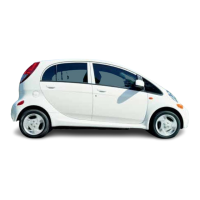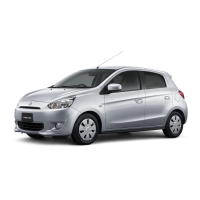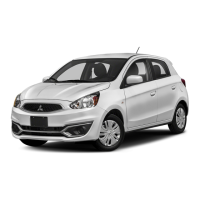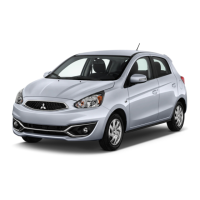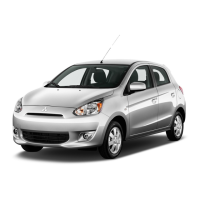Troubleshooting
o-21
This Section provides an easy reference guide to the more common
problems that may occur during the operation of your vehicle. Various
symptoms and their probable causes are grouped under headings denot-
ing components or systems, such as Engine, Cooling system, etc. They
also refer to the Chapter and/or Section that deals with the problem.
Remember that successful troubleshooting isn’t a mysterious black art
practiced only by professional mechanics, it’s simply the result of knowl-
edge combined with an intelligent, systematic approach to a problem. Al-
ways use a process of elimination starting with the simplest solution and
working through to the most complex -and never overlook the obvious.
Anyone can run the gas tank dry or leave the lights on overnight, so don’t
assume that you’re exempt from such oversights.
Finally, always establish a clear idea why a problem has occurred and
take steps to ensure that it doesn’t happen again. If the electrical system
fails because of a poor connection, check all other connections in the sys-
tem to make sure they don’t fail as well. If a particular fuse continues to
blow, find out why-don’t just go on replacing fuses. Remember, failure
of a small component can often be indicative of potential failure or incor-
rect functioning of a more important component or system.
Engine and performance
1 Engine will not rotate when attdmpting to start
1 Battery terminal connections loose or corroded. Check the cable ter-
minals at the battery; tighten cable clamp and/or clean off corrosion as
necessary (see Chapter 1).
2 Battery discharged or faulty. If the cable ends are clean and tight on
the battery posts, turn the key to the Oh position and switch on the head-
lights or windshield wipers. If they won’t run, the battery is discharged.
3 Automatic transmission not engaged in park (P) or Neutral (N).
4 Broken, loose or disconnected wires in the starting circuit. Inspect all
wires and connectors at the battery, starter solenoid and ignition switch
(on steering column).
5 Starter motor pinion jammed in flywheel ring gear. If manual transmis-
sion, place transmission in gear and rock the vehicle to manually turn the
engine. Remove starter (Chapter 5) and inspect pinion and flywheel
(Chapter 2) at earliest convenience.
6 Starter solenoid faulty (Chapter 5).
7 Starter motor faulty (Ohapter 5).
8 Ignition switch faulty (Chapter 12).
9 Engine seized. Try to turn the crankshaft with a large socket and
breaker bar on the pulley bolt.
2 Engine rotates but will not start
1 Fuel tank empty.
2 Battery discharged (engine rotates slowly). Check the operation of
electrical components as described in previous Section.
3 Battery terminal connections loose or corroded. See previous Sec-
tion.
4 Fuel not reaching carburetor or fuel injector. Check for clogged fuel
filter or lines and defective fuel pump. Also make sure the tank vent lines
aren’t clogged (Chapter 4).
5 Choke not operating properly (Chapter 1).
6 Faulty distributor components. Check the cap and rotor (Chapter 1).
7 Low cylinder compression. Check as described in Chapter 2.
8 Valve clearances not properly adjusted- Chapter 1 (four-cylinder en-
gines).
9 Water in fuel. Drain tank and fill with new fuel.
10 Defective ignition coil (Chapter 5).
11 Dirty or clogged carburetor jets or fuel injector. Carburetor out of ad-
justment. Check the float level (Chapter 4).
12 Wet or damaged ignition components (Chapters 1 and 5).
13 Worn, faulty or incorrectly gapped spark plugs (Chapter 1).
14 Broken, loose or disconnected wires in the starting circuit (see pre-
vious Section).
15 Loose distributor (changing ignition timing). Turn the distributor body
as necessary to start the engine, then adjust the ignition timing as soon as
possible (Chapter 1).
16 Broken, loose or disconnected wires at the ignition coil or faulty coil
(Chapter 5).
17 Timing chain or belt failure or wear affecting valve timing (Chapter 2). /
3 Starter motor operates without turning engine
1 Starter pinion sticking. Remove the starter (Chapter 5) and inspect.
2 Starter pinion or flywheel/driveplate teeth worn or broken. Remove
the inspection cover and inspect.
4 Engine hard to start when cold
1 Battery discharged or low. Check as described in Chapter 1.
2 Fuel not reaching the carburetor or fuel injectors. Checkthefuel filter,
lines and fuel pump (Chapters 1 and 4).
3 Choke inoperative (Chapters 1 and 4).
4 Defective spark plugs (Chapter 1).
5 Engine hard to start when hot
1 Air filter dirty (Chapter 1).
2 Fuel not reaching carburetor or fuel injectors (see Section 4). Check
for a vapor lock situation, brought about by clogged fuel tank vent lines.
3 Bad engine ground connection.
*
4 Choke sticking (Chapter 1).
5 Defective pick-up coil in distributor (Chapter 5).
6 Float level too high (Chapter 4).
6 Starter motor noisy or engages roughly
1 Pinion or flywheel/driveplate teeth worn or broken. Remove the in-
spection cover on the left side of the engine and inspect.
2 Starter motor mounting bolts loose or missing.
7 Engine starts but stops immediately
1 Loose or damaged wire harness connections at distributor, coil or al-
ternator.
2 Intake manifold vacuum leaks. Make sure all mounting bolts/nuts are
tight and all vacuum hoses connected to the manifold areattached proper-
ly and in good condition.
3 Insufficient fuel flow (see Chapter 4).
8
Engine ‘lopes’ while idling or idles erratically
1 Vacuum leaks. Check mounting bolts at the intake manifold fortight-
ness. Make sure that all vacuum hoses are connected and in good condi-
tion. Use a stethoscope or a length of fuel hose held against your ear to
listen for vacuum leaks while’the engine is running. A hissing sound will be
heard. A soapy water solution will also detect leaks. Check the intake
manifold gasket surfaces.

